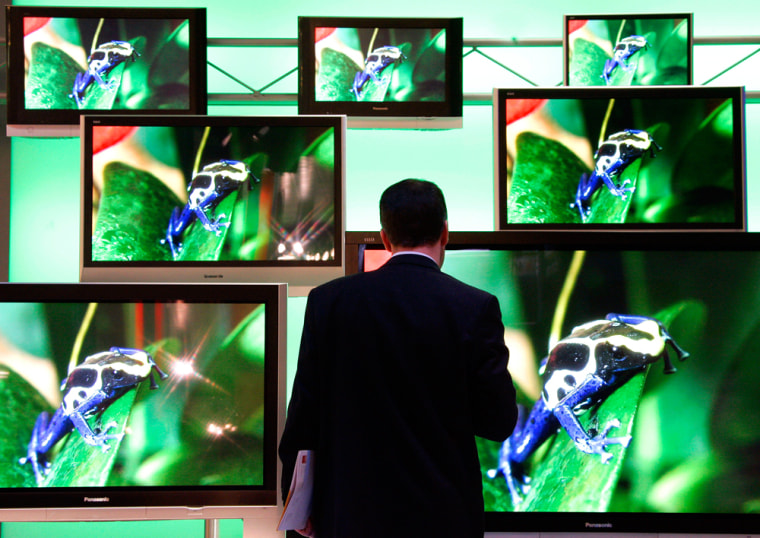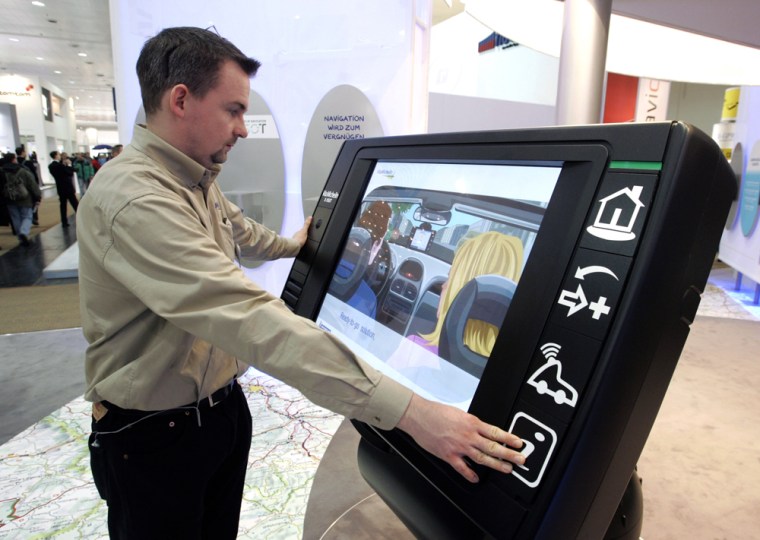At CeBIT this year, bigger is indeed better among the companies that make the world's mobile phones, personal computers and televisions.
Whether it's hulking flat-panel high-definition TV screens, fat cell phone storage capacity, or tiny portables with full laptop function, visitors are hit with the message that more is better _ even though it may come in a smaller package.
The opening day's buzz Thursday was clearly owned by Microsoft Corp., which unveiled its Project Origami to be an ultracompact personal computer, which claims to pack full PC function into a machine half the size of a piece of copier paper.
With three working models from Samsung, Founder and Asus, the four companies drew big crowds and even German Chancellor Angela Merkel to see it in action. David Steel, Samsung Corp.'s vice president of digital media business said its version, dubbed the Q1, was a clear sign of convergence in the tech industry.
"Now the consumer has a single mobile computing device that combines the mobile functionality of many different devices," he said, adding that it would be a replacement for media players, gaming devices, palmtop PDAs and even laptops.
From the futuristic display by mobile phone makers Nokia and Sony Ericsson to the entertainment oriented set up by Samsung, including what it bills as the world's biggest flat-screen television, this year's CeBIT is a cornucopia of big and small among all types of gadgets.
South Korea's Samsung brought a host of new or improved devices, including a mobile featuring a built-in 10-megapixel camera. That was two megapixels more than its top offering last year. Then there was its cell phone that features an eight-gigabyte hard drive, perfect for storing tons of photos or music.
In debuting the new camera phone, the SCBH-600, Lee Ki-tae, the head of Samsung's telecommunications business, said it would go far in helping the company snare more market share.
"Increasing our market share in Europe will be decisive in determining the survival of our mobile phone business," he said Thursday, and vowed to push that to 14-15 percent, up from the nearly 13 percent it currently has. That is still half of the 30 percent that Finland's Nokia has.
The phone is set to go on sale in South Korea by June with a rollout in other markets later this year. To store photos taken with the phone's auto-focus 3x optical zoom lens and flash, it features MMC micro memory cards of varying sizes.
It will also record MPEG4 videos and can play MP3, AAC and AAC+ files, as well; additionally, it has a link to TV for viewing photos on a bigger screen.
Taiwan's BenQ Siemens, which acquired the German company's mobile phone business last year, brought a massive display of its phones, hoping to prove that the quality issues that plagued it then are in the past.
Many visitors were drawn to the company's EF51, a small square box that looked more like an MP3 player than a cell phone. A flip of the lower half of the case revealed the key pad but it was designed to play music, even while remotely using a wireless adaptor that hooks into a stereo.
"You can operate the phone and change the music and when people ask for the DJ, they can say he's on the dance floor," said Miguel Lasprilla, who was demonstrating the phone.
One of the new features is its speech-to-music function, he added. A user can tell the phone the name of a song and it will search for it and start playing it. The phone also doubles as a karaoke machine, too, with the lyrics of a song displayed on the 128x128 pixel color screen.
And it also features built-in speakers that play music in stereo, and plays enriched "surround" sound when plugged into a stereo. The phone is expected to be out between April and March but the price has not been set.

For fans of home theater, several companies showed off the latest in big-screen TVs. Really big.
Samsung showed off its 102-inch (2.5 meter) flat screen monstrosity, but just a few steps down Panasonic went even bigger. It had what it called the world's truly biggest high-definition flat-screen, a 103-inch (2.6-meter) screen showing a video from the East Village Opera set in New York City with scenes of the Staten Island ferry that were so lifelike it triggered memories of the 23-minute boat ride to Manhattan.
On smaller scale, the ubiquitous popularity of the iPod was evident, too, notably in third-party accessories that not only afforded protection, but new ways to view Apple's video iPod.
Vanguard had one accessories that consisted of a simple aluminum stand to prop the iPod on while it charged. But unlike other chargers, a plastic magnifying screen could be flipped down, making the screen appear larger than it actually is.
"It makes the screen larger and easier to watch," said Francois Niederlender, a company spokesman, adding it was expected to be available by the middle of the second quarter.
CeBIT has more than 6,200 exhibitors and is expected to draw as many as 500,000 visitors by the time it ends March 15.
